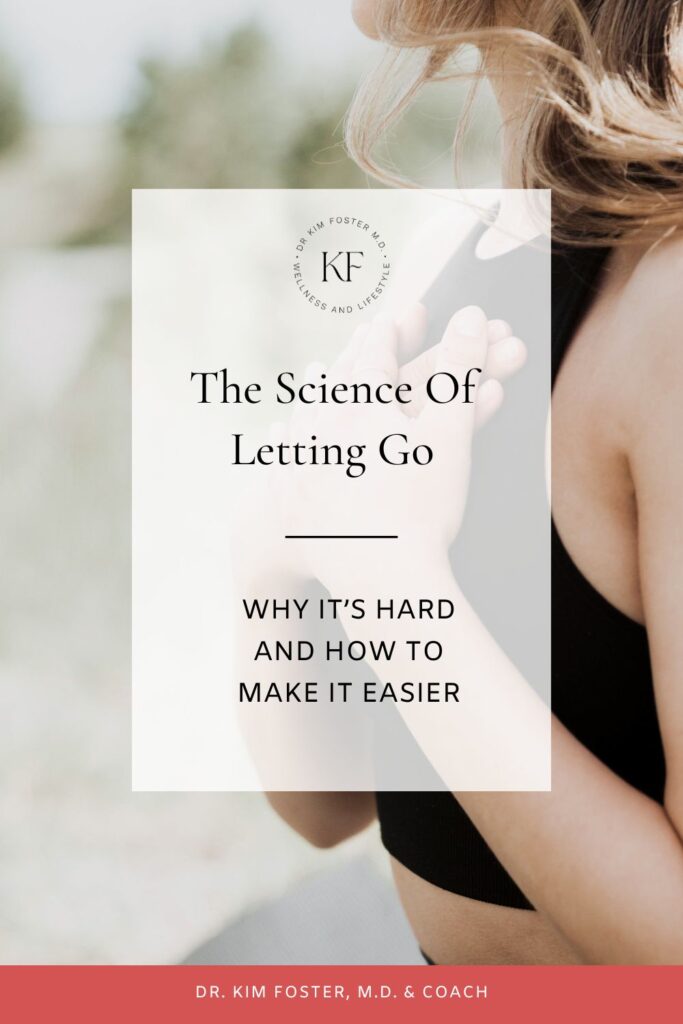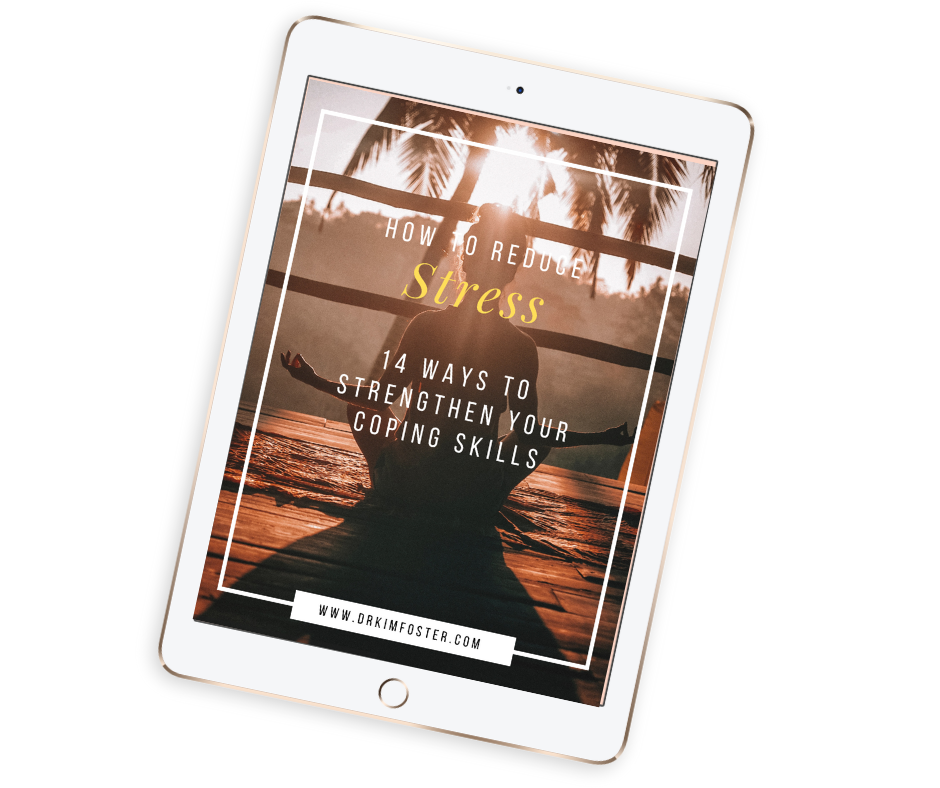We’ve all heard the phrase “Just let it go” hundreds of times, yet doing so is rarely as straightforward as it sounds.
It’s not that we consciously choose to cling to the past or to people who no longer serve us. Rather, our brains are naturally inclined to preserve memories, emotions, and connections – even those that cause us pain.
So, if you’re struggling to let go of something holding you back, know that it’s not because you are weak but because you are human.
The good news is that you CAN rewire your brain to release the grip of the past and embrace new beginnings.
In this article, I’m sharing the science behind why letting go is so hard, plus five transformative strategies to help you finally find freedom.
Why Letting Go Feels Impossible
There’s a biological reason why letting go often feels unattainable.
Research indicates that the same neural pathways that register physical pain also respond to emotional distress. This is why a heartbreak or significant life transition can manifest as both deep sadness AND actual physical discomfort.
What’s more, our brains are hardwired to prioritize familiarity over happiness. As a result, we tend to cling to what we know, even when it holds us back or makes us miserable.
Once we recognize that our struggle to let go is rooted in our brain’s natural wiring, we can begin to explore strategies to reprogram our responses.
Let’s start with the first step…
1. Reframe Letting Go as a Gain, Not a Loss
Did you know that our brains feel losses twice as intensely as gains?
This is due to a cognitive bias known as “loss aversion.” For example, the pain of losing $100 feels much stronger than the joy of finding $100.
This bias affects our decision-making skills and makes us more risk-averse. We fear the potential losses associated with change, so we hold onto everything and anything, from a toxic relationship to a miserable job to an outdated identity.
But what if we were to start seeing letting go as a gain rather than a loss?
Instead of thinking, ‘I’m losing this,’ if we ask, ‘What am I making space for?’ the pain of letting go will essentially be half, making it feel much more doable.
So start doing this today – Reframe letting go as a gain, not a loss.
2. Trick Your Brain with Small Releases First
Another reason why letting go feels overwhelming is that we try to do it all at once. For example, if we want to kick the bad habit of mindlessly scrolling through social media, we think we must delete our social media apps or lock our phones away.
But letting go doesn’t have to be this drastic.
By approaching change as a gradual process, our brain adapts better, and we feel far less resistance.
So, if you want to let go of excessive social media usage, a small first step could be not checking your phone for the first 5 minutes after waking up.
In doing so, you won’t notice the absence anywhere near as much as you would if you locked your phone away for the whole morning.
Opting for small releases over drastic change like this tricks the brain into realizing that releasing things doesn’t equal loss; it equals freedom.
3. Use the ’90-Second Rule’ to Process Emotions Faster
Here’s something that will shock you – An emotion, chemically, only lasts 90 seconds.
It’s true. When an uncomfortable feeling such as fear or anxiety arises, if we resist feeding that emotion, it will naturally dissipate within less than two minutes.
But most of us don’t know this because we are so used to feeding our emotions. You know how it goes: anxiety arises, and we feed with thoughts like:
“What if I mess up?”
“They will think I’m a fraud.”
“I don’t want to be laughed at.”
Our mind then spirals into a full-on anxiety attack, making us believe that we have no control over our emotions.
Yet, if we take hold of the steering wheel as soon as we notice that emotion arising, we can prevent a full-blown anxiety attack.
Here’s how:
- As soon as you feel an emotion, set a timer for 90 seconds.
- Rather than push the emotion away, breathe through it. Focusing on your breath will help to keep your attention on your body, making it harder for your mind to spiral.
- Picture the emotion as a wave and watch as it rises, peaks, and passes.
4. Rewrite the Story in Your Brain
Our brains are hardwired to remember negative experiences as a protective mechanism, ensuring we learn from past pain to avoid future harm.
But here’s the silver lining: we can rewrite our memories.
When we shift our perspective on a past event, our brains literally update the memory.
I learned this lesson the hard way.
Back in university, I was blindsided by an unexpected breakup. For months, I replayed every moment, desperately searching for answers.
I felt stuck, and oddly enough, reanalyzing the details provided a sense of connection to the past, even if it wasn’t serving me.
Eventually, I realized that I wasn’t just reliving a memory, I was reinforcing a narrative that held me captive.
I began to see my experience in a new light. Instead of thinking, “I have been abandoned,” I reframed it as “I am being redirected toward something better.”
That subtle shift transformed everything because while we can’t change the past, we can control how we carry it with us.
5. Use Visualization to ‘Cut the Cord’
Research shows that our brains can’t tell the difference between a real experience and an imagined one, which is why visualization can be such a powerful tool.
If you find yourself feeling stuck and unable to let go, here’s a simple exercise you can try:
- Visualize what’s holding you back right now, such as an outdated belief, a toxic relationship, or a past version of yourself. Imagine a cord connecting you to that thing.
- Now, visualize yourself cutting this cord, symbolizing the final step in releasing the past. Feel the weight lift from your shoulders as you take this transformative action.
As the research shows, when we visualize, we’re not just imagining change; we’re actively reprogramming our brains.
Final Thoughts
For a more in-depth walkthrough of these 5 steps, check out the video episode on YouTube:
Then, take your first step towards change by sharing in the comments one thing you’re committed to letting go of!
And if you’re looking for more helpful resources, download my free guide on stress reduction. It’s packed with science-backed techniques to help you calm your mind and make letting go easier!
Resources:
- My Free Stress Reduction Guide: 14 Ways To Strengthen Your Coping Skills
- My Goal-Setting Planner – The WellPlanned Method™
- My Free Class for Health Coaches: How To Build A 6-Figure Health Coaching Business Using One Signature Program
- Dr. Kim on Instagram: https://www.instagram.com/drkimfoster/
Download my FREE Guide: 14 Ways To Strengthen Your Coping Skills!

FREE CLASS!
Looking to take your wellness journey to the next level?
The 3 Secrets For Stepping Into A Meaningful New Career Without Wasting Time Or Money
- find out why health & wellness coaching is a skyrocketing industry that can provide the freedom and fulfillment you’ve been craving
- discover the 3 biggest myths about health & wellness coaching that will hold you back (and what the truth is instead)
- learn the secret sauce for getting amazing results for your clients (and building a profitable business as a wellness coach)
…and more!








